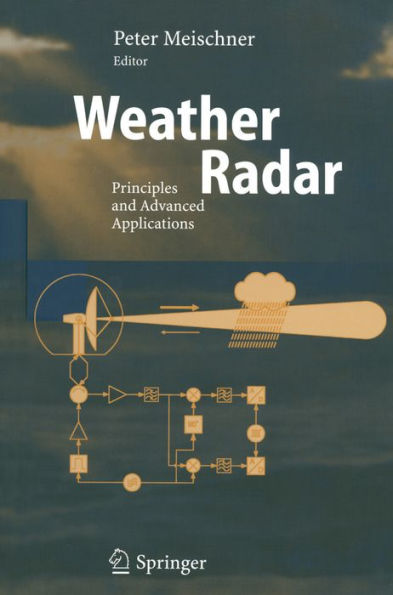All aspects of our lives are influenced by the weather and especially severe weather events - such considerations tend to become more pertinent as such weather events may become more frequent with global warming. It is evident that better weather forecasts for the next few hours, days or even weeks have a high economic value for our developed and densely populated world. Ground and air traffic management benefits, as does the construction industry, tourism, agriculture and big outdoor events such as the Olympic games. Weather fore casting nowadays relies on numerical weather prediction models. The reliability and accuracy of forecasts however depends not only on the quality and resolution of these models, but to a high degree on the density and quality of input data from observations. Weather radar measurements complement current data such as ground observations and soundings at smaller scales and satellite observations on larger scales. Targeted weather radar measurements additionally give detailed insight into the processes governing the developments of, for example, frontal systems and thunderstorms, which is needed for improving the model quality by comparing the observations with model forecasts. Weather radar observations on their own can be used directly for short-term forecasting, called nowcasting, just by observ ing the developments of weather systems some 100 km around and extrapolating the observations with knowledge of their typical behaviour. Finally, with reliable quantitative measurements of area precipitation by radar, flood forecasts will be improved.
1101671668
Weather Radar: Principles and Advanced Applications
All aspects of our lives are influenced by the weather and especially severe weather events - such considerations tend to become more pertinent as such weather events may become more frequent with global warming. It is evident that better weather forecasts for the next few hours, days or even weeks have a high economic value for our developed and densely populated world. Ground and air traffic management benefits, as does the construction industry, tourism, agriculture and big outdoor events such as the Olympic games. Weather fore casting nowadays relies on numerical weather prediction models. The reliability and accuracy of forecasts however depends not only on the quality and resolution of these models, but to a high degree on the density and quality of input data from observations. Weather radar measurements complement current data such as ground observations and soundings at smaller scales and satellite observations on larger scales. Targeted weather radar measurements additionally give detailed insight into the processes governing the developments of, for example, frontal systems and thunderstorms, which is needed for improving the model quality by comparing the observations with model forecasts. Weather radar observations on their own can be used directly for short-term forecasting, called nowcasting, just by observ ing the developments of weather systems some 100 km around and extrapolating the observations with knowledge of their typical behaviour. Finally, with reliable quantitative measurements of area precipitation by radar, flood forecasts will be improved.
159.0
In Stock
5
1

Weather Radar: Principles and Advanced Applications

Weather Radar: Principles and Advanced Applications
Related collections and offers
159.0
In Stock

Product Details
| ISBN-13: | 9783662052020 |
|---|---|
| Publisher: | Springer-Verlag New York, LLC |
| Publication date: | 04/17/2013 |
| Series: | Physics of Earth and Space Environments |
| Sold by: | Barnes & Noble |
| Format: | eBook |
| File size: | 23 MB |
| Note: | This product may take a few minutes to download. |
From the B&N Reads Blog
